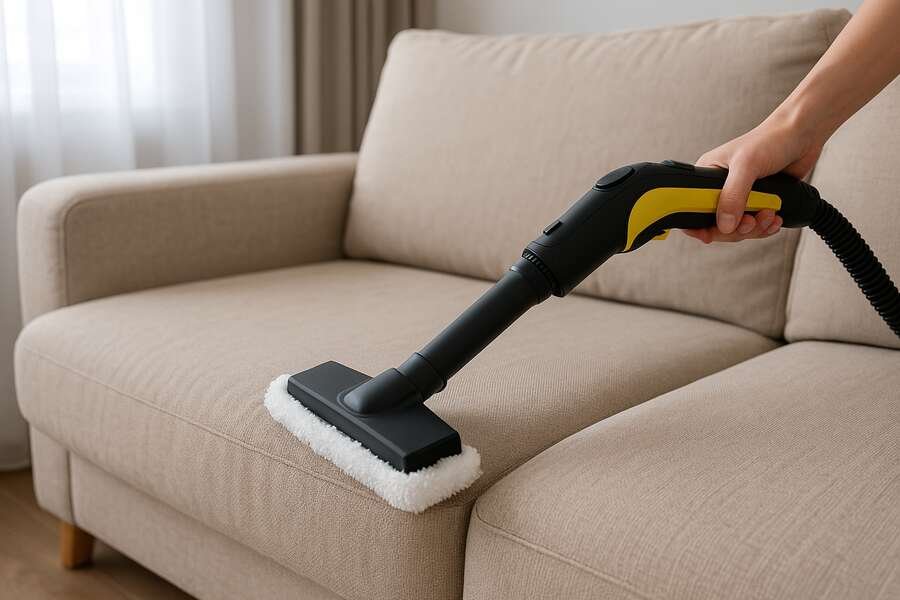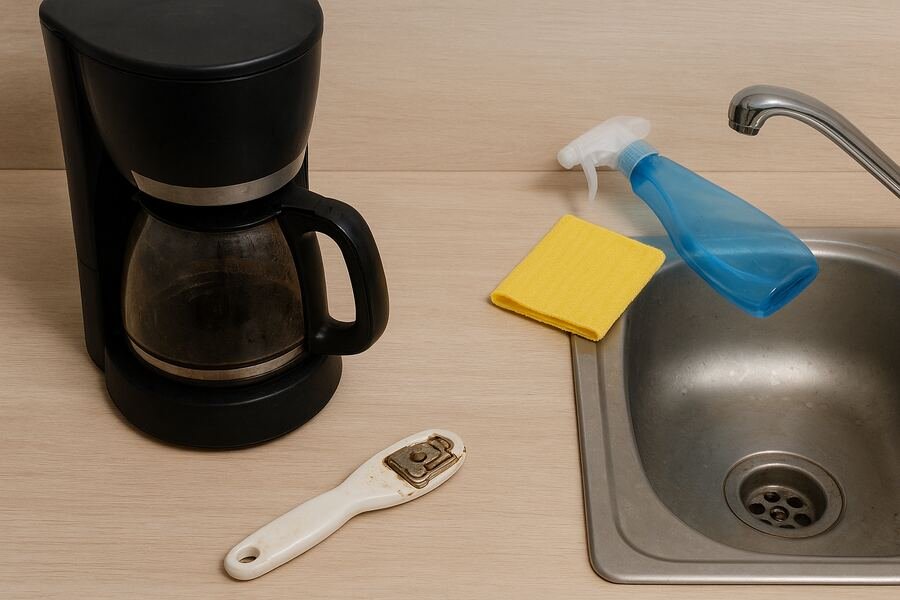How to Clean Upholstery Effectively Using a Steam Cleaner?

Steam Cleaner: Effective Upholstery Cleaning Tips
How to Clean Upholstery Effectively Using a Steam Cleaner? Did you ever speculate what is in the very essence of the couch or the favourite armchair? What say you? When last did you ever cleaned your upholstery? Not just vacuuming or brushing it with your hand-but an actual cleaning down to the fibers-that refreshed the material and removed whatever was down beneath?
Layers of dust mites, pet dander, oils from the body, and even old food crumbs accumulate with age, serving as a burgeoning ground for terrible odours to form and stains to set in. Should one choose to bring their furniture back to its prime, a steamer is the last ace up their sleeve. Let’s, then, speak of its being used in an assured, secure, and proper way.
1. Should You Steam Clean Upholstery?
Steam cleaning can be regarded as one of the non-toxic and fabric-safe deep upholstery cleaning methodologies. It uses steam at very high temperatures to dissolve dirt that is embedded deeply into the fabric, to kill bacteria and dust mites, and to lift stains. Also, needless to say, this is a great cleaning option in homes where children, pets, or allergic individuals reside, given that allergens are removed without the introduction of toxins. Another great advantage of steam cleaning is that it does not excessively wet the fabric; hence, it has a level of drying time and does away with any chances of moulding, unlike traditional shampooing or water-based methods.
2. Check the Fabric Type First
It is best to always check upholstery care tags for confirmation of whether steam or Bond Cleaning Pimpama is good for that upholstery. Usually, fabric tags have cleaning codes that offer some guidance. A tag with “W” indicates that the fabric can take water-based cleaning safely, thus allowing steam cleaning as well. The “W/S” indicates water- or solvent-based cleaners may be used, also justifying steam use. Conversely, “S” specifies to be used only in solvent-based cleaning products, no water or steam. If you see “X,” it is recommended not to use liquid cleaning methods and to settle for vacuuming only instead.
3. Vacuum Thoroughly Prior To Steaming
An efficient steam cleaning can not be applied when loose dirt has not first been removed. Working with a vacuum cleaner with a brush attachment or upholstery attachment, you are to clear up pet hair, crumb dirt, dust and surface dirt on every surface of your piece of furniture its cushions, crevices or even on its sides and back. Otherwise, this dirt may become muddy patches or even be forced deeper into the fabric when one begins steam cleaning. A clean surface also allows steam to better get at stains and bacteria.
4. To get More Effective Results, Pre-Treat Stains
In order to clean effectively, cleaning tough stains before steaming is necessary in order to have the best cleaning results. Spray on a pre-treatment solution that is appropriate to your upholstery, or make your solution of warm water and mild dish soap. Wait a few minutes so that the stain can be broken down. Natural choices. In case of odours, a combination of water and white vinegar in the ratio of 1:1 is useful, and the residues of oil may be absorbed with baking soda. Again, touch the cloth as lightly as possible and blot. DO NOT RUB the spot using a clean cloth.
5. Selecting the Fix Steam Cleaner Attachment
The way to preserve your upholstery by using the right one is important through the steam cleaner attachment. Choose nozzles with soft bristles or those that are non-abrasive to the fabric. Rigid ones can only be applied to heavy materials. Reduce the steam to medium or low, do not stay too long at a given spot with the nozzle. Focused heat and water may warp, discolour or shrink; thus, keep the nozzle moving to avoid uneven, unsafe cleaning.
6. Slow and Even Strokes
More than anything, the steam-cleaning technique matters! Begin by moving slow and steady strokes in one direction across the upholstery. Slightly overlap each passing movement compared to the last to cover every perplexed section evenly. Be gentle; heavy-handedness is unnecessary, steam loosening all the dirt and grime for you. Extra treatment should be given to high-traffic areas, such as armrests and seat cushions, while maintaining shorter steaming durations per spot to allow swift and even cleaning.
7. Drying Is Crucial—Speed It Up
There will still be wet upholstery despite the use of less water in steam cleaning. Proper Ventilation is crucial so that drying is adequate and no smells or mould occur. Keep all the windows open; turn on the ceiling or floor fans; operate a dehumidifier inside the building; or in case of the latter, transport the furniture to a warm prevailing area under the open air. Avoid using and sitting on the pieces until it is completely dry, which is normally 4-6 hours, depending on the material. Pallets may be useful in staging cushions so they can be dried faster due to the circulation of air. Cushions should be kept upside down.
8. Repeating Regularly for Flowering Furniture
The steam cleaning should also be made part of the usual cleaning schedule, just to keep the furniture clean and with a fresh smell. This would prevent the excess building up of allergens at a maximum of every six months, or at least every six months; this would prolong the lifetime of the furniture and keep the house very fit. Families with children or pets are advised to give more steam treatment, and so are families with smokers. Completing a steam cleaning is never merely a matter of renewing your furniture, but is an opportunity to improve the quality of the air in your house, as well as make the place you live nicer.
Conclusion
Safety measures should be exercised whenever using steam cleaners. Do not clean fine fabrics such as silk, velvet and suede unless the manufacturer mentions that it is safe to do so. Before even putting your steam cleaner to use, always refer to and note the instructions tended to it. Children and pets should be excluded during the time the steam cleaner is operational, and it should be left to dry off before commencement of use. When done properly, steam each piece of upholstery with care a satisfying task since the whole house will be feeling clean and comfortable.



